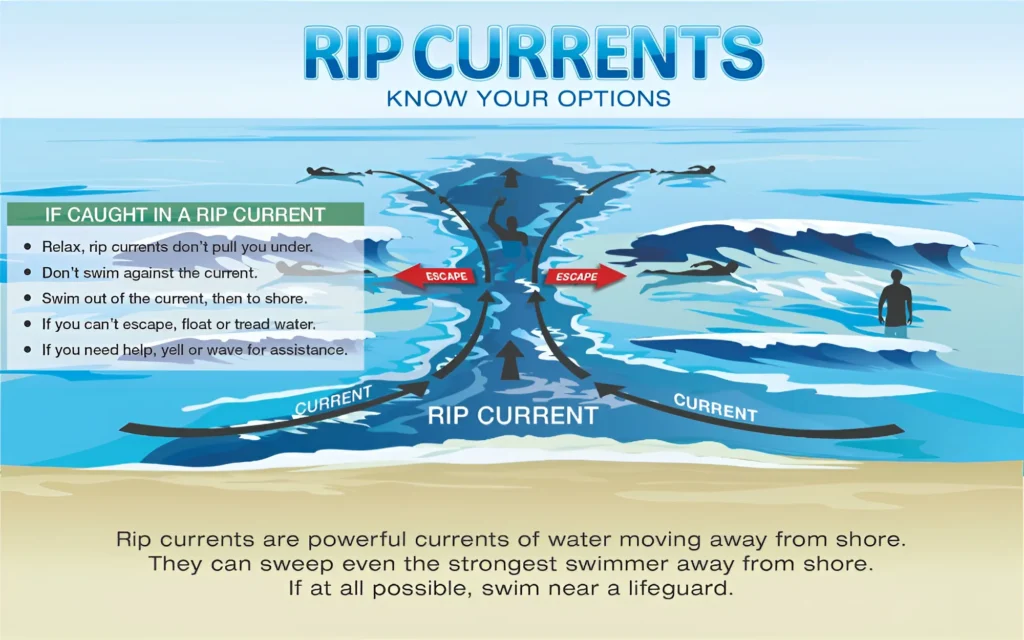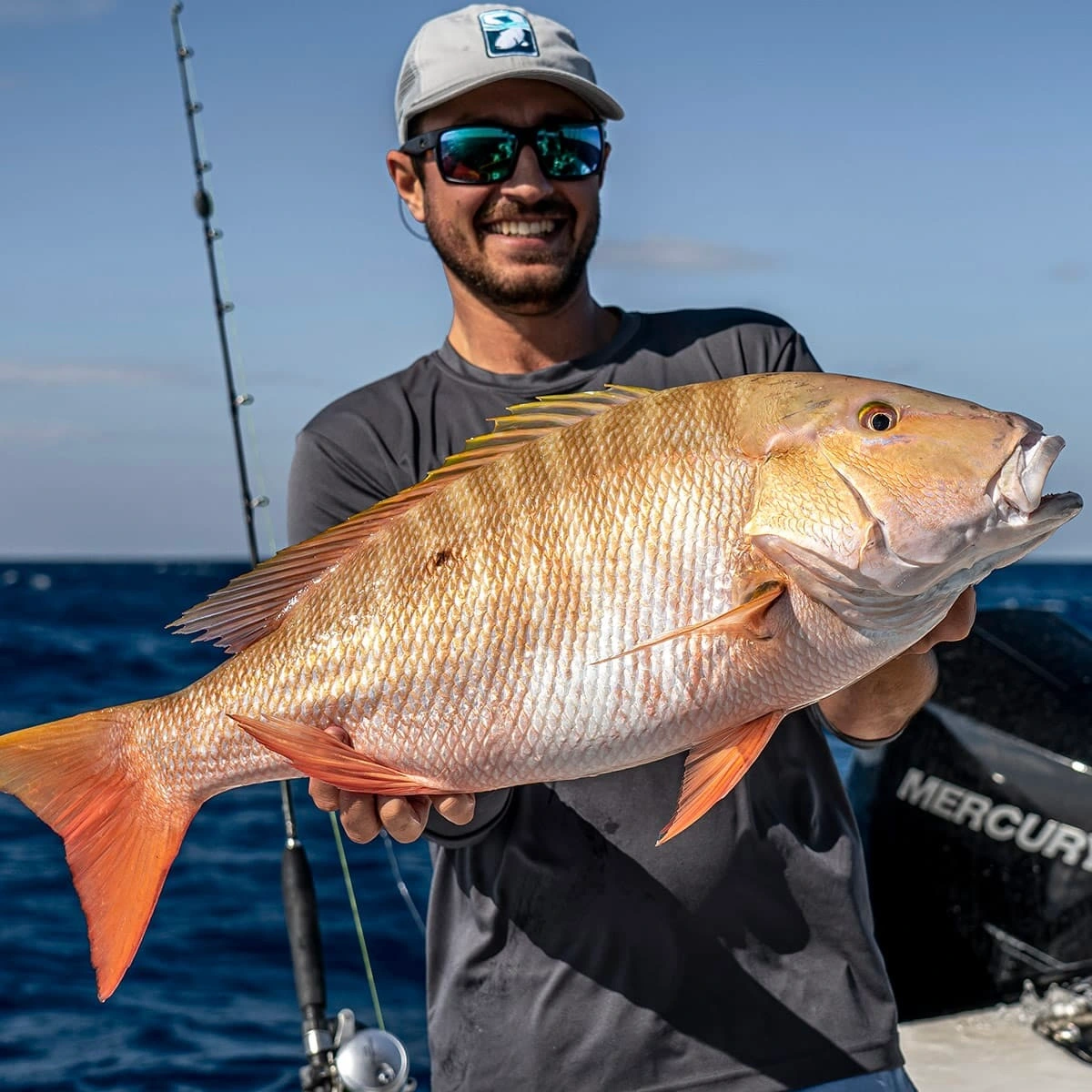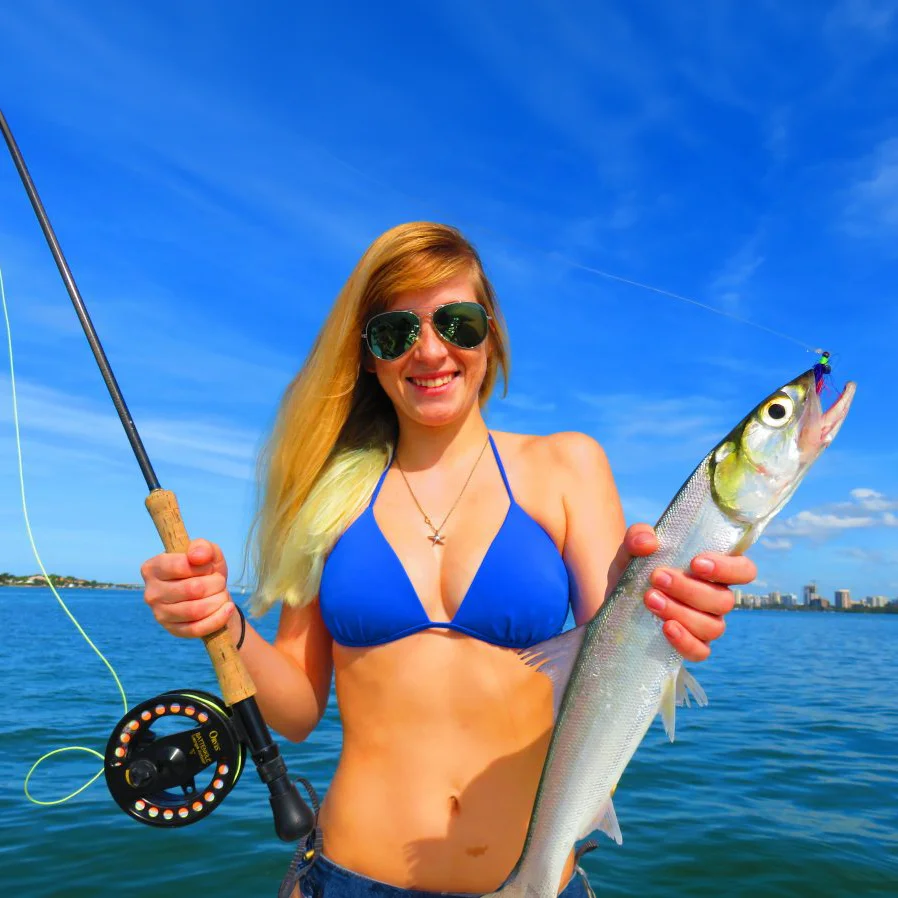Index
- What Are Rip Currents?
- How to Identify Rip Currents
- The Dangers of Rip Currents
- Safety Tips
- What to Do If You’re Caught in a Rip
- Staying Safe and Informed
- FAQ’s
Heading to one of Florida’s beach this summer? While enjoying the sun and surf, it’s crucial to be aware of rip currents(rips), a hidden danger in the ocean. In this article, we’ll explore what rips are, how to identify them, and, most importantly, how to stay safe if you encounter one.
What Are Rip Currents?
Rip currents are powerful, narrow channels of fast-moving water that can quickly pull swimmers away from the shore. These currents typically form when waves break strongly in some locations and weakly in others, creating a flow of water that moves away from the beach. Despite common misconceptions, rips are not “undertows” that drag you underwater. Instead, they pull you horizontally away from the shore, which can be equally dangerous if you’re unprepared.
How to Identify Rip Currents
Spotting rips can be tricky, but there are several visual clues you can look for:
- Color Changes: Areas where the water appears darker due to deeper channels.
- Calm Patches: Strange as it sounds, rip currents often occur in seemingly calm patches of water between breaking waves.
- Choppy Water: A churning or choppy appearance in the water.
- Foam and Debris: Water, foam, or debris moving steadily seaward.
You can also perform a float test: throw a small object (like a stick) into the water and watch its movement. If it quickly moves seaward, it could indicate a rip current.
The Dangers of Rip Currents
Rips are responsible for more than 80% of rescues performed by beach lifeguards. They can travel at speeds of up to 8 feet per second, faster than an Olympic swimmer. The physical effects of being caught in a rip can include panic, exhaustion, and even drowning if the swimmer tries to fight against the current. If swimmers are not careful, fatalities can occur.
Safety Tips
Staying safe starts with being aware and prepared:
- Check Beach Warnings: Always pay attention to beach warning signs and flags, which indicate water conditions.
- Swim in Designated Areas: Stick to swimming in areas patrolled by lifeguards. Swim during the day to avoid the risk of being dragged out during sunset when shark activity is at its peak.
- Educate the Family: Ensure everyone, especially children, understands the dangers of rip currents and how to spot them.


What to Do If You’re Caught in a Rip
If you find yourself caught, the key is to stay calm:
- Don’t Fight the Current: Swim parallel to the shore to escape the narrow current.
- Float or Tread Water: If you can’t break free, float or tread water until the current dissipates, then swim back to shore.
- Signal for Help: Wave your arms and yell for help to attract attention from lifeguards or other beachgoers.

Staying Safe and Informed
Understanding rip currents is essential for beach safety. They can be deceptive, but with the right knowledge and precautions, you can enjoy the ocean safely. Remember, the ocean is powerful, but respecting its potential hazards can keep you and your loved ones safe. What better way to avoid rip currents than on a beautiful new Caymas!
Spread the word—share this information with friends and family to ensure everyone can enjoy the beach safely.
Rip Current FAQ’s
Rip currents are caused by variations in wave heights and breaking patterns, creating a narrow, fast-moving channel of water that flows away from the shore.
No, rip currents pull swimmers horizontally away from the shore, while undertows drag swimmers downward, which is a different phenomenon.
Rip currents can travel up to 8 feet per second, faster than an Olympic swimmer at full speed.
Look for darker, narrow gaps of water heading offshore between areas of breaking waves and whitewater.
You can float through the rip, and once out swim back to shore. If you’re a good swimmer, swim parallel to shore until you’ve cleared the pull of the rip current. Swim with the waves, allowing them to push you to shore.






 Discover Black Label Marine Group — Florida’s premier boat dealership. From Ocala to Clearwater to Punta Gorda, we offer an unparalleled boating experience with a curated selection of top brands like Sea Fox, Caymas, Crownline, and Finseeker. Dive into your next adventure with us and become part of the Black Label boating family!
Discover Black Label Marine Group — Florida’s premier boat dealership. From Ocala to Clearwater to Punta Gorda, we offer an unparalleled boating experience with a curated selection of top brands like Sea Fox, Caymas, Crownline, and Finseeker. Dive into your next adventure with us and become part of the Black Label boating family!